Does the “classic digital” camera exist, or is the term an oxymoron? Many believe that a classic is, by definition, a film camera. But evidence now points to the opposite, and supports the case for the classic digital compact. After nearly three decades of digital photography, interest in older digitals —mostly compacts — is burgeoning. Photographers are being encouraged to dig into their drawers and explore their attics for early examples of point and shooters from the early years. And it’s then a short step to canonisation at the earliest opportunity, with the resultant scramble for examples of the lucky targets and steadily rising prices on the ‘Bay.
Classic drive
Classical digital cameras could become the new Zeitgeist for the first quarter of the century. It comes hard for me, for I have always prided myself on being inimical to fads and phases. Proof of this is evident in my daily drive vehicle. A classic two-door Saab Viggen from 1999. At the time, it was the fastest Saab ever built. Now a quarter of a century old, it performs flawlessly. My wife, my family, my friends all continually suggest that I should buy a new car, even an electric vehicle. But all that does is make me dig my heels in deeper and maintain the status quo.
My dyed-in-the-wool approach to cars and cameras has held up well. But then I read about a movement that’s gaining traction. Macfilos has mused on the topic back in February. Scarily, it means that for the first time I now find myself a reluctant participant in a Zeitgeist. That said, let’s consider the topic of what’s old is new again, and admit that it’s now time to get all those old digital cameras out of storage and take them for a spin around the block.
Classic Digitals? Or Digital Classics?
Do you focus on the Future? Or do you concentrate on the Here and Now? Or, third option, are you a Looker-Backer? There’s an adage that “it’s OK to look in the rearview mirror, but don’t stare”.
Looking back, briefly, we see that the commercial emergence of digital cameras occurred about 25 years ago. It was at the turn of the millennium that 2MP and 3MP cameras hit the mass market as a new way to consider photography.
Seeking the fossils
An archaeological dig through storage in my study yielded two other great little early digitals. One was an Olympus mju that our son Ben bought as his first digital camera in 2003. Yes, we were an Olympus family in the early 2000s.
It was a great little pocketable camera that took its design cues from the compact Olympus mju 35mm film camera. A traveller’s delight, being weatherproof, it was ideal for Ben as he headed off to Scotland for oil industry training and climbing in the Highlands.
Alas, the camera world has lost Ben, I suspect forever, as he now uses a top-end smartphone for photography. He’s not alone, of course, but the resurgence in interest in both film and classic digital cameras could bring smartphone addicts back to the fold. They are something special, unusual, and more hands-on than the modern iPhone.

The other little fossil that I found lurking at the back of the archive was a Sony DSC-W350. It is a 14MP camera that my wife Dianne used on a 21-day trek to Everest base camp in 2012. Sadly, I remembered that I sold the 7.2MP Sony W80 that I had bought in 2007 and used on that that Himalayan trip.
I unloaded it after returning home because I was concerned about yak trail dust that had found its way into the zoom lens mechanism. This was unfounded, I now believe, because the camera was working perfectly up to the point of sale.
A switch to Sony
During this period, in the last half of the first decade, we moved to Sony digital cameras. My thinking was that superb Sony electronics combined with the reputation of Zeiss lenses was the best combination for cameras at that time.
The first image below is from our 21-day trek into Gokyo on the northern Tibet border with China. The mountain in the rear with the freezing jetstream is Choy Ouyu, at over 8,000m, the fifth-highest peak in the world. Hillary and a team tried to climb it in 1952, but were unsuccessful. In 1953, they conquered a higher peak nearby.
That peak, Everest, is seen as the giant rock in the rear of the bottom image. The village in the foreground is Gorak Shep, the site of the 1952 Swiss expedition. Present day base camp is at the fall of the glacier in the centre of the image. I took these two Himalayan images with my 7.2MP Sony W80.
The question of Classic Digital Cameras
Moving forward and onto the topic, there is an emerging interest in potential “classic digital cameras”. Every week, I read and enjoy Amateur Photographer, the British magazine which continues to survive when others have succumbed to the digital explosion.
There’s a lot of varied content in there, and during this last year there have been several articles pondering which early digital cameras might be destined to become collectible classics.
The usual suspects were listed: The Ricoh GR digital series, the original Fuji x100, cute Sony and Canon offerings, for instance. But there was only one Leica, predictably the Leica Digilux 2.
The only Digilux that I have stashed away is a 4mp Digilux 1, the predecessor to the Digilux 2. This was a generous gift from Macfilos citizen John Shingleton, when he underwent a major clean out as he downsized his primary residence. It even has the add-on infrared filter and adapter tube. It continues to work well, with no suggestion of sensor rot in this example.
Above: The Leica Digilux 1, followed by five images from John Shingleton’s archive, to indicate the quality of output from that camera. They were all taken in 2004, with the last image being a product of the infrared filter attached to the camera.
Exploring the possibilities
Reading those articles, I wondered what the next classic digital Leica might be. Discussion with Macfilos colleague John Shingleton over coffee this week raised a few possibilities. John suggested the M9, except that the decaying sensor has been a distraction. He pondered the X Vario, a favourite of his, and then proceeded to remind me (for the umpteenth time) that I should never have sold mine. That’s one of this shooting-fish-in-a-barrel pastimes, deliberately needling me about divesting the X Vario.
After cogitation over the coffee, nonetheless, we came to a consensus that the next classic digital Leica should be the Leica X1. Released in 2009, it produced top quality images then, and excellent images still today. Further, the sweet spot of the Barnack form factor has been mentioned many times as part of its mystique.
The darker side
The elephant in the room when it comes to cherishing old digital cameras is repair and maintenance. Your average classic film camera can usually be repaired easily. This is especially so for Leicas where there is a thriving network of repairers and “CLA” (clean, lubricate, adjust) merchants.
With digitals, however, breakdowns can be fatal. The Leica M9 has the potential to suffer from sensor rot and, while it can be repaired as long as parts last, it’s an expensive operation. The rear screen of the M8 fails frequently and there are no spare parts to be had. The Leica X1 and X2 suffer from broken battery latches and flat internal batteries, both of which are quite costly to repair. And the Digilux 2 is only as good as it continues to work. If the electronics go, or the sensor fails, your camera will end up in a display case.
Conclusion
There is currently a great deal of interest in resurrecting those old, forgotten point-and-shoot cameras from yesteryear. True, the displays are antediluvian, and the results are not that brilliant (with some clear exceptions such as the Digilux 2 and X1), but they are fun to use.
Furthermore, consider the much ridiculed monster digital zooms with which many of these cameras were equipped. At the time, they were a running joke among serious photographers. Who would want to crop to that extent?
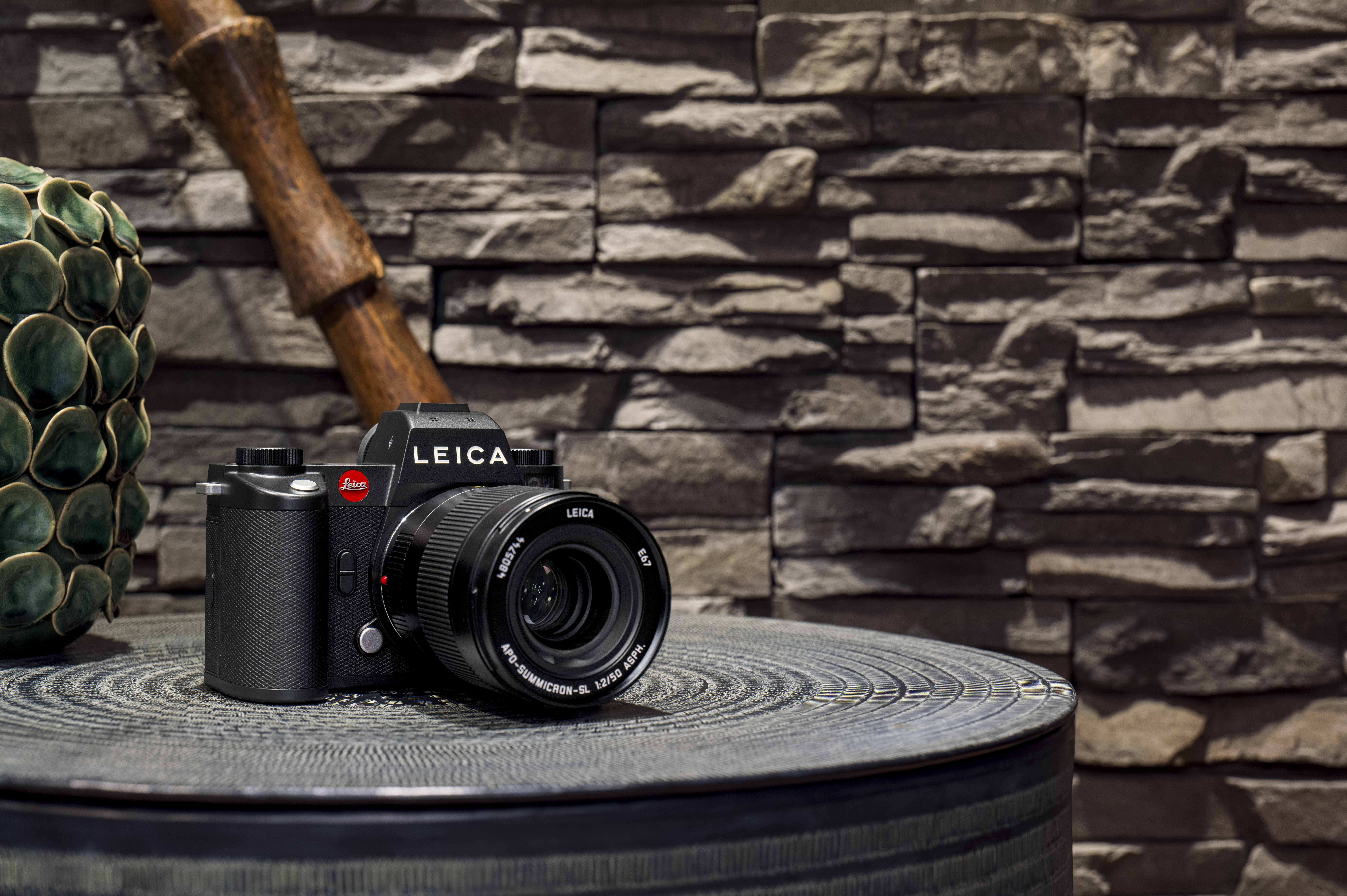
But, over the years, higher resolution sensors and modern lenses have combined to make digital cropping viable. None other than Leica’s lens guru, Peter Karbe, is a firm advocate of crop-to-zoom. That is, of course, with a very high-resolution sensor and one of his superb lenses.
Some questions
To finish, let’s consider a few questions.
- What are your thoughts regarding an emergence of classic digital cameras?
- Will they become collectible classics?
- Have some already become collectible?
- Is digital rot, aka electronic composting, a concern? Or fragile battery latches?
- What do you consider to be the Leica digital classics of the future? Could it be the X1, another or all of the X series? Why?
- Will the M9 with a sensor replacement, or the original Leica Q, or the X Vario be more likely candidates to become classic digital collectibles than the X1?
- What about the other forgotten Leica cameras? Any votes for the lovely little original Leica C typ112, another camera that I now wish I had kept rather than moving it on?
And yet more questions:
- What old digital cameras do you still have in storage? Are they still functional? Which one(s) will you always keep? Why?
- And how often do you get your classic digital cameras out into the sunshine?
So many questions, so many little cameras. Do consider them if you wish, but don’t spend too much time looking in the rearview mirror.
But do open a few drawers and see what you’ve accumulated. All good fun.
Read more from Wayne Gerlach
You may also like this YouTube video
Want to contribute an article to Macfilos? It’s easy. Just click the “Write for Us” button. We’ll help with the writing and guide you through the process.

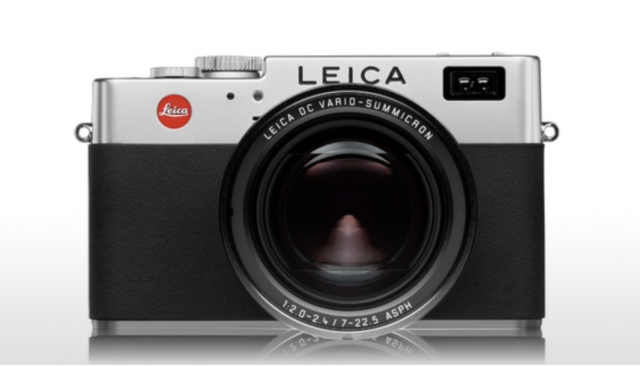
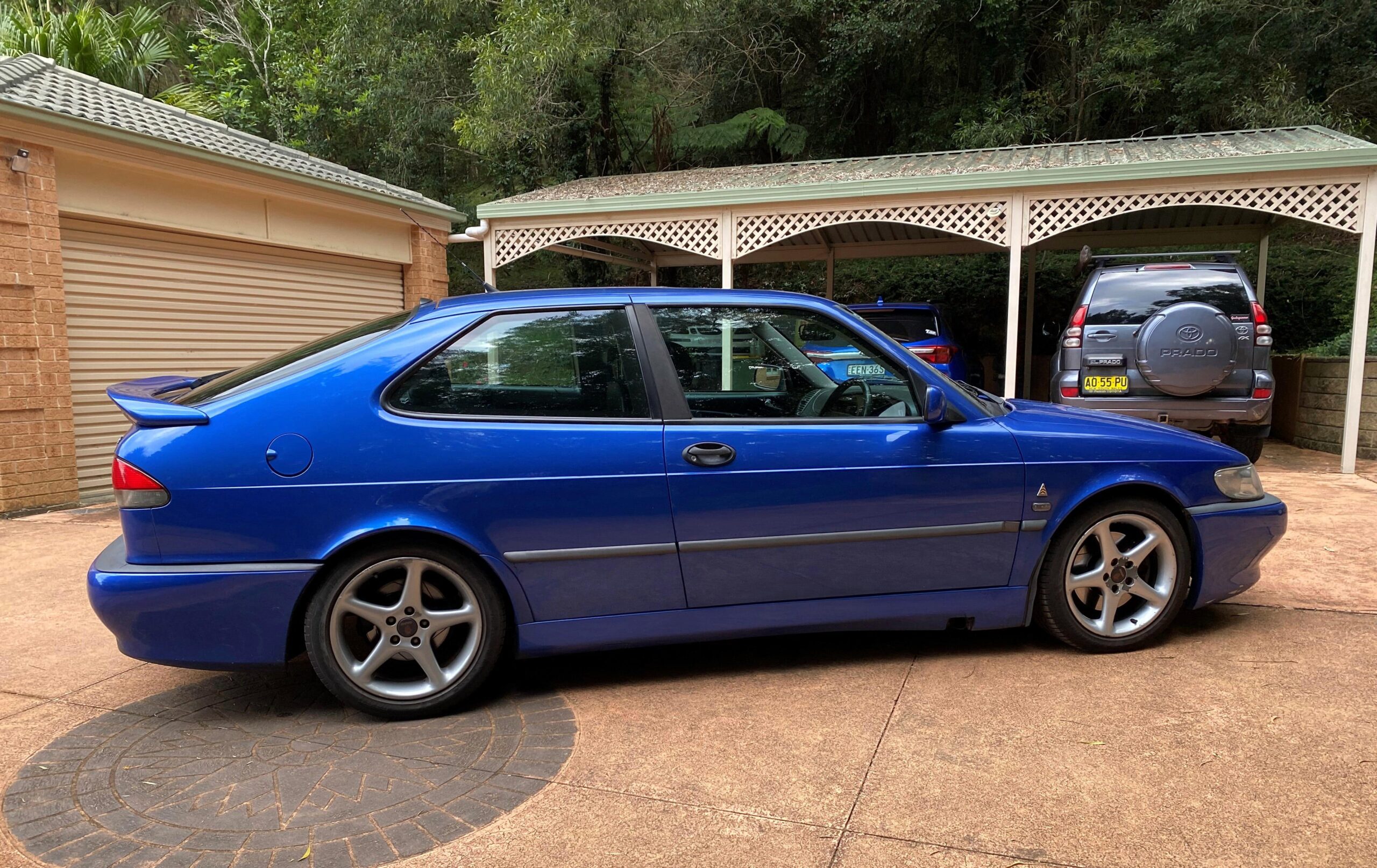

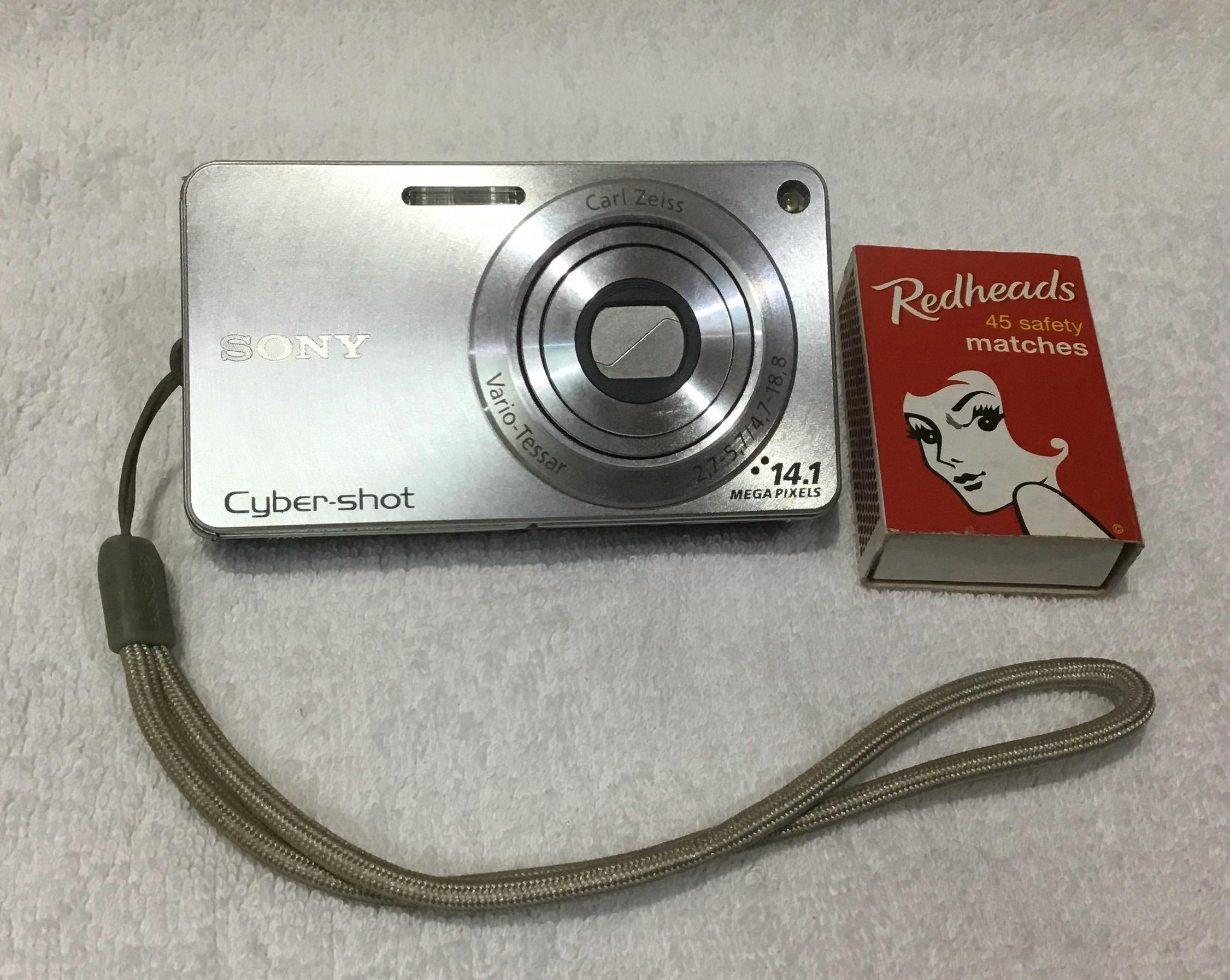

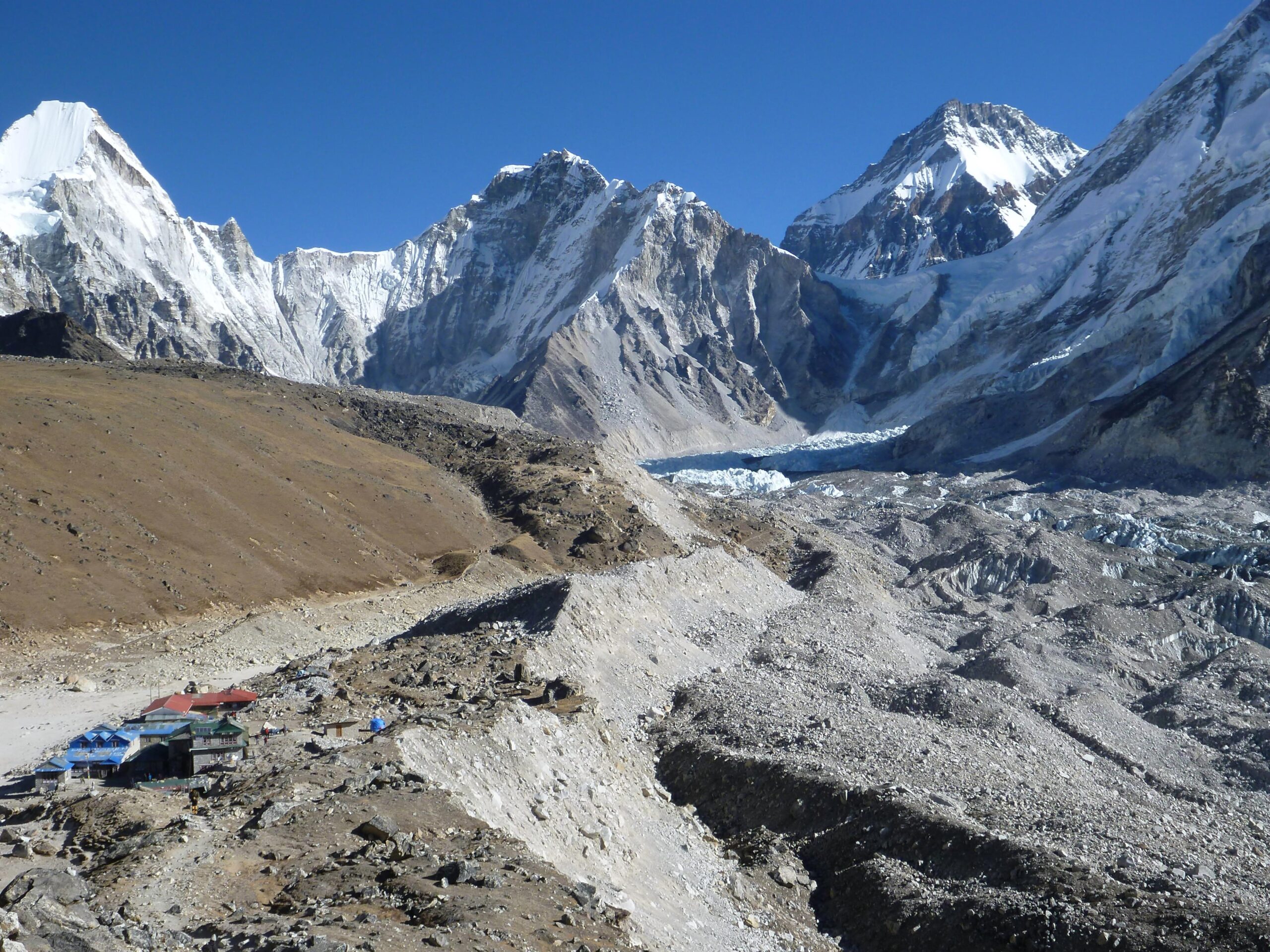

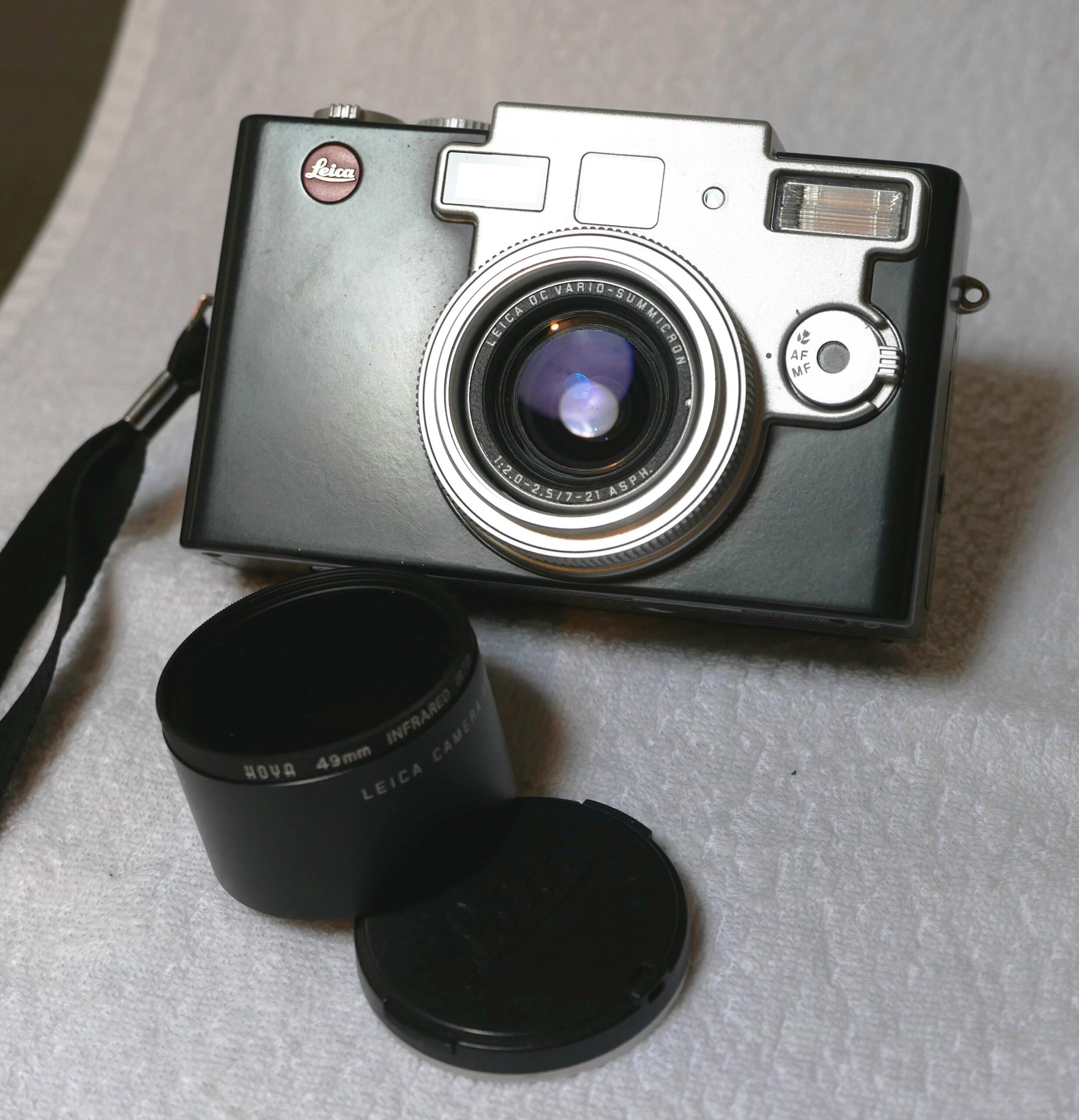





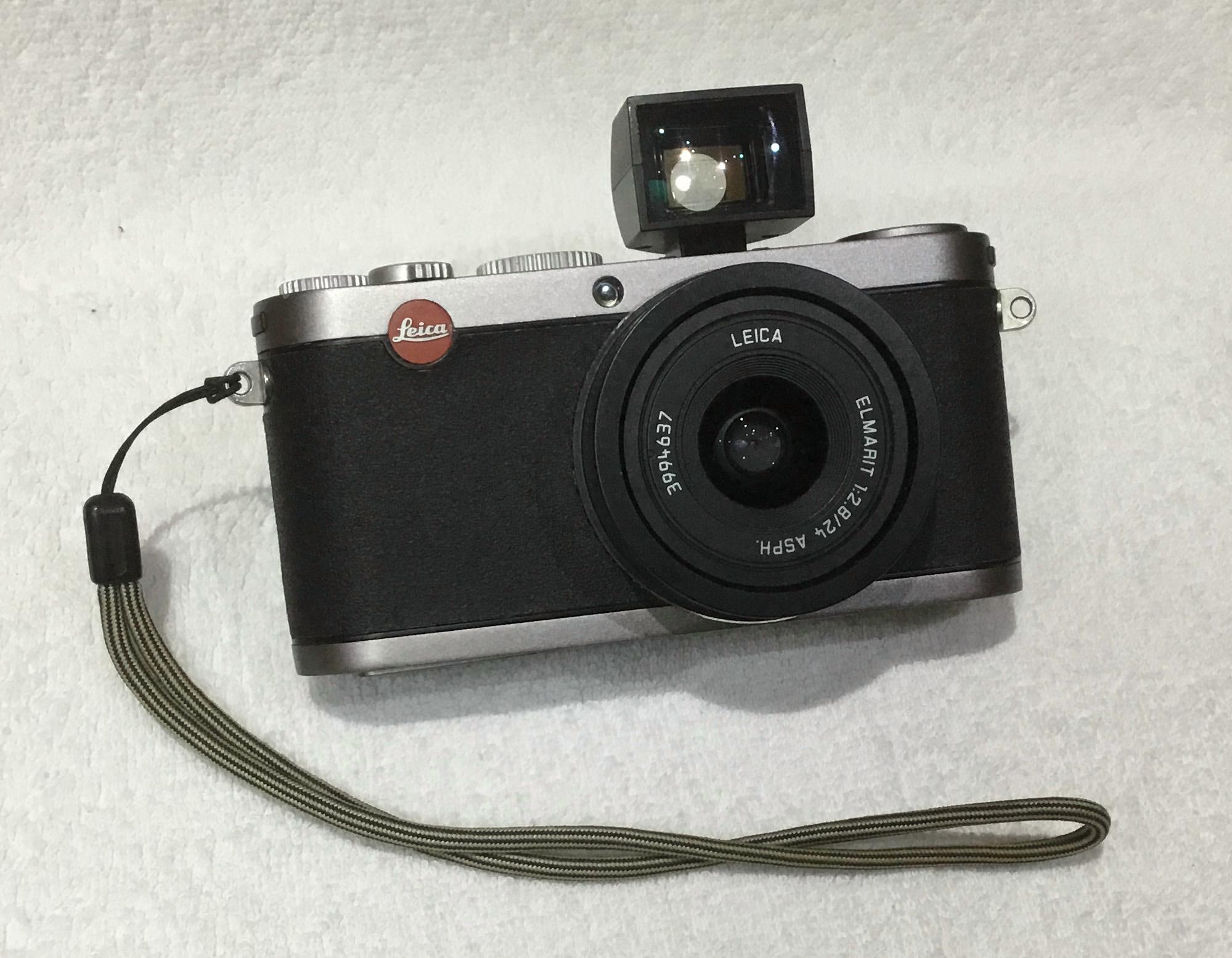




I have a Leica D-Lux 1 with box and all ancillaries . Bought new in 2003 for £600 it still works perfectly and even though only 2.3 MP produces great images from it’s 7 element lense. I don’t think many were made or sold so it is not likely to be regarded as a classic . I will never sell it ,. It would probably only fetch £200 or less. I just love it. .
That’s probably a collectors’ item by now! I agree, keep it and enjoy it occasionally.
Sorry I should have mentioned only the E500 and not the E1 had the black and white Jpegs option. Somehow I ended up with a charity bay purchase of a E300 . Followed by sigma 18_50 Sigma 24 mm 1.8 Olympus 50 f2 and the budget zoom lens. I suppose the thing is affordability back in the day E520 was a huge expense for me.
Well after my used Leica M9 died after 10 images . It had been sold with no warranty from the largest UK camera stores and no refund forthcoming. I missed the jpeg images . I was given an Olympus E1 and E500 neither were believed to be working. Fresh battery and we were away. I tend to use them as a film camera. Set them up and don’t look at the images until loaded onto the Mac. To be honest they now go everywhere with me and the Leica q and M240 sit in the drawer. The black and white Jpegs need very little work.
Another aspect. The revival is driven by young people, from their perspective these are ancient technology. So to use vintage digital cameras is very hip and it can distinguish them from older people. When a 50ish is using old digital compact cams, it looks only old. Not trendy or unique.
Regarding to questions. I’m still using the first Sony RX100. But I think more as a habit, not die a proper reason.
Hello Jax.
I do agree that younger users are a significant part of the classic digital zeitgeist. They can afford them, they have fun with them, they smile when they are using them. Us older types take our cameras more seriously, maybe too seriously.
It’s good to see that you’re still using your original X100. I had one in Mongolia at a military parade some years ago. A lady and her elderly father, military officer with a chest loaded with medals, allowed me to take a photograph. They laughed at what they thought was an old camera, then smiled appreciatively when I showed them their image on the rear screen. Retro styling rules ok 😀.
I still have and use a Nikon Coolpix 600 from 1998. It is digital nostalgia for sure, but was awful picture quality even in 1998. The real prize goes to an absolute classic (with a price that matches it’s status), the beautiful Epson R-D1. I think Epson outdid Leica with this design, the display dials are something to behold, and the lovely 6mp CCD sensor is rewarding, especially in shooting b&w. I use mine with Voigtländer lenses and some old Jupiter lenses and love everything about this camera.
Hi Richard. Yes, the Epson R-D1 is another quite special camera from the early days. In fact Epson cameras maintained a top reputation for quality and specification throughout their specifications. On the ‘net I see the following passage at cameralegend.com “Everyone expected that Leica, the company synonymous with the rangefinder camera, would be the first to come out with a digital rangefinder. As history has played out, Epson did it first and Leica came in second with the M8 in 2006.”
But it’s your mention of Jupiter lenses that really sparked some dormant neurones for me. I have two of them stashed away somewhere, that I used to bolt onto a Fuji xe3 with an adapter. Now you’ve triggered me into thinking that I should get those lenses out once again…..if I can find them, that is.
And when was the last time that Jupiter lenses were mentioned on Macfilos? Who else still plays with them? As indicated in the article “All good fum”.
Oh, I’ve got a few Industar and Jupiter ..no, wait a minute: I’m supposed to be charging up my FD7 for a shoot-out, and not here yapping about Russian lenses.. but I just reached across and picked up my yellow and blue Industar-disguised-as-‘Ukraine’ 55mm f2.8 ..I don’t imagine that THEY are still being sold by Russian camera dealers!
(The camera itself is a FED or a Zorki, made to look like a Leica, but painted all over in yellow and blue, with the Ukrainian ‘trident’ symbol on both the camera and lens. Very rough and ready, but the lens is great ..as is the scimitar-sharp Jupiter on an old FED which my Beloved found in a Paris flea market, with perfect screw-mount scythe-sharp focusing. I’ll see if I can dig out a picture or two taken with that, to add to today’s page – haven’t finished it yet – of Sony ‘Mavica’ FD7 stored-on-a-disc photos.
..’Mavica’ being an abbreviation of ‘Magnetic Video Camera’ ..video stills stored on a magnetic floppy disc having been taken with a camera.)
Now off to shoot 22 Mavica photos…
Hey David. Please do consider showing the Mavica images here on Macfilos. I’m sure there are many who would like to see what you catch, and the quality level produced by the FD7. Twenty two images, one day’s outcome. Should be fun. Enjoy.
OK Wayne – and Martin – your wish is my command ..we-ll, possibly.
Here’s a quick’n’dirty web page which I cooked up especially for you, with a few more details about the Mavica FD7, and some photos shot with it. (There are now 24 pics stored on this particular floppy disc! ..no; wait: just taken another ..now there are 25 ‘Fine’ quality pics on one 1.4 megabyte floppy.)
“..Should be fun..” ..yes, indeed.
Yours, David ..with Mike’s permission: https://www.edituk.com/Sony_FD7.html
WOW! This article sure brought forth a lot of comments.
I wonder, is it too early to look back and define what constitutes a classic digital camera? After all, we really couldn’t (in my view) properly classify the different phases of film cameras until they were supplanted by digital, because we did not know what was coming next in film and film cameras.
I suppose before too long “smart” phones will have supplanted digital cameras, then we can properly look back at digital.
As for me, I used digital cameras in my work, purely as a matter of convenience, years before I used digital for personal photography. First digital for work was the original Sony Mavica, which could record, I think, only about eight images on a 3-1/2″ “floppy” disk. How far we have come.
.
Er, 22 images on my Mavica’s floppy discs ..that being part of the attraction; so much cheaper – though nowhere near the resolution – than film. And, of course, no ‘developing’ with messy chemicals, nor washing, ‘fixing’ and drying ..and not having to repeat the process all over again just to print the photos onto paper.
What first superseded all that messy ‘chemical’ splashy photography was Polaroid self-developing – and self-printing – film: press the shutter button, pull out the film&paper ‘sandwich’, let it ‘develop’ by itself for 60 seconds, and then just peel apart ..there’s your photo! (See that page referenced below: tinyurl.com/FujiFilm40i and scroll down to Item 3 – The Polaroid Peel-Apart.
Polaroid’s black-&-white re-usable negative (Type 47?) film was a real wonder. Rated at ISO 3000 it was large format (approximated 3¼”x4¼”), could be used in very dim light, self-developed in 60 seconds, would peel apart from its positive ‘print’, the negative could then be ‘coated’ (wiped over) with a cylindrical sponge of preservative (which came with the film) and which permanently ‘fixed’ and hardened the negative, and the neg could then be re-used any number of times in a normal larger-than-35mm photographic enlarger to produce big – and highly detailed – black-&-white prints!
THEN, Polaroid film ceased to be, because using a ‘digital’ camera meant that you didn’t need to buy any kind of film at all, your pictures (if you didn’t develop them yourself) needn’t be developed and seen and handled by anyone else at Boots the Chemist, or wherever (..if they were ‘personal’, or what might be called ‘rude’ photos..) so the bottom fell out of the Polaroid market, and a new era began: take as many pics as you wanted, and see them INSTANTLY ..at no cost!
But which of those will be called ‘Classic’, I really don’t know ..yet.
David, I believe the Mavica could only hold eight or nine on a 3-1/2″ disk if you selected the highest resolution.
Polaroid’s dual positive-negative pack film (3.25×4.25″) was called Type 105 in the U.S., or Type 55 for the 4×5″ variety. It was rated only ISO 75. The ISO 3000 film did not yield a real film negative; only the paper negative that was disposed of after the shot.
OK, I was wrong about the Mavica. Sony manual says 15-20 images in Fine mode. BTW, I had the FD7, the one with a zoom lens.
Sorry, wrong again, but right. I had the Sony Mavica FD81, which indeed held a maximum of eight images per floppy!
Tomorrow morning I’ll get out my Mavica FD7 and will shoot until the disc is full, and I bet you a full week’s wages ..oh, hold it; I’m (supposedly) retired.. well, I’ll bet you an old age bus pass that it’ll hold 22 images. Count ’em!
Oh, and the “..ISO 3000 film did not yield a real film negative; only the paper negative that was disposed of after the shot..” nope; you must have been using a different film.. there was Type 47 – Panchromatic 3000/36°, Type 37 – Panchromatic 3000/36° and Type 20 – Panchromatic 3000/36° The 20 series of films were made for use in the Swinger, Polaroid’s first budget camera retailing at $19.95 in 1965 ..and Wikipedia also tells me that “Type 20c – Panchromatic 3000/36° The first black and white Polaroid film to not require a protective coating on the prints” ..so which version were you using, Martin?
“..BTW, I had the FD7, the one with a zoom lens..” ..that’s the one I was talking about, diddlel’t I? Just you wait, ‘Enry ‘Iggins, it’ll be FD7s at dawn, and we’ll see who can squeeze the most number of shots on a disc!
(Then after that, cream cakes.)
Well, it’s now morning over here on the other side of the world. I’ve just finished breakfast, and seeing the discussion that Martin and David have been having while I’ve been asleep. It’s clear that they both love their Sony Mavica memories, and have emotional attachment to the Sony Mavica series. Admirable.
There is also a special early mention of the Sony Mavica in the YouTube Amateur Photographer TV “Best vintage digital cameras”.
I wasn’t previously aware of the important role that the Sony Mavica played in catapulting us into the brave new world of digital photography nearly 30 years ago. So, is it time to consider elevating the Sony Mavica as one of the first digitals to be elevated from Classic to Legend status. Hhhhmmm.
Hello all, I’ve just noticed that I’m named as “Anonymous” in all my replies to Comments.
I guess that it’s an indication that the Macfilos browser has forgotten me, due of the time that I’ve been absent from Macfilos. Seems like I’ll have to re-register my name in the browser.
I’m pleased that rumors of my demise are greatly exaggerated (was it Mark Twain who first coined words to that effect?).
I’m smiling, nearly laughing in fact.
I like how you ended the article with “open a few drawers…” It’s always fun to do that. I didn’t really keep any classic digitals, my oldest currently is a Nikon V1, still in use. Film cameras are a different story.. I can pull out of my drawer a Leica CL, Contax T2, Contax Aria, Olympus XA4, Fuji HD, Minolta 9000AF and on and on. My first ever digital camera was a white Pentax zoom compact. It was a lot of fun to play with but the double A batteries usually died after about 25 minutes picture taking, which was enormously frustrating. I also remember taking a tiny digital Minolta Dimage X something ( 30? ) with just 3MP on a trip to India and held a small exhibition of the resulting photos at A4 size! I also had my M6TTL with me but I took more pictures with the Minolta because it was just more convenient to use. The images while being far short of what I could squeeze out of the Leica in terms of resolution, were actually surprisingly good.
Hi Stephen. That is quite a collection. Impressive. If that’s what you’ve kept I do now wonder what you’ve moved on :-).
Looking at the list of your collection it is the Nikon V1 that tugs at my heartstrings. I had a Nikon V1 with a couple of its dedicated lenses at some stage of my journey. A great little camera; a baby Nikon with 10mp that the dSLR types looked down upon. Steve Huff did a great review of it, with images indicating its quality. In fact, its form factor was excellent, similar to the fixed-lens Fuji X20 that Jason mentions in the next Comment. And that has set me wondering whether either of those little cameras deserve elevation to classic digital status, for as long as they stay alive.
…..and Stephen, I must acknowledge that it was our Editor Michael who put the “open a few drawers” phrase into the text of my draft. He does a great job of making a silk purse out of a sow’s ear. Thank you Michael for all your edits on a draft text.
Thank you Wayne Anon. I don’t know what you are coming up as anonymous and I don’t know how to change it. Try posting a comment from another browser or computer and make sure you enter your name and email address to be sure.
Cheers Michael.
I have also checked the “Save my name, email ….etc” checkbox below the message entry box, after entering my name and email address but that doesn’t seem to remember me either.
But I do exist…..at least I think I do 😁.
(I’ll try another computer, and another article. Do assured that it doesn’t fuss me at all.)
Yes, the very reason I hung on to the V1 is because the color and resolution was and is still excellent even from that little sensor. It doesn’t have the best ergonomics but the image quality speaks for itself. I haven’t found a suitable replacement for it yet so it’s still in my bag for travel and cycling duty. I remember looking at the X20 in the store when it was available and in hindsight should have bought one. Oh well. I certainly agree these two cameras could be considered classic digitals.
I was slow to jump on the digital bandwagon so I didn’t have many digital camera bodies to move on. The first one that truly impressed me was the Olympus OMD EM5 another great and innovative camera and I still have that one too! The only reason I don’t use it regularly is the complexity of the menu setting but I think if my V1 finally dies or batteries become unavailable, whichever comes first, it could easily step in as it’s not much bigger than the Nikon and far more capable.
A very nice read, Wayne. Good stuff.
I think I wrote an article for Macfilos about 5 or 6 years ago about an ancient Fuji camera I had found in an Opportunity shop and how the sheer limitations of that camera evoked a sense of film use. That movement, and that ethos, has certainly grown over time amongst photographers, though I’m not attuned to zeitgeists enough to fully understand it.
However, I am one of those who believe that in certain lighting conditions, some ccd sensors produce a different look and feel to the images compared to the slightly later CMOS sensors that everyone switched to. As a topical reference for the largely Leica focussed Macfilos, I’d hazard a guess that few owners didn’t see a big difference in the output of the M9 compared to the M240, for instance. And it’s this sort of belief that I think plays a part in the “classic” digital camera revival. I myself have recently been picking up an Olympus E-300 , with it’s unusual mirror box setup and Kodak sensor as my latest bit of old camera fun. Apparently it too has become one of the zeitgeists notable players. Hmm, perhaps I should also pick up my pen again.
Hope this finds you and John well, Wayne.
I should probably add that I have an innumerable , and certainly overdone , collection of old digital cameras here. Panasonic Lx5, Fuji X20, (both excellent little cameras), Minolta 5D , Canon 1Ds ( Canons first full frame Dslr iirc, which used batteries somewhat analogous to car batteries, sold new for $11k Australian and I somehow found a year or so back for $200) , Oly E510, Pentax K10, Canon 40D , Nikon D200, probably others, countless little digital compacts that I’ve forgotten……… yeah, it’s an illness!!
Gday Jason. Good to hear from you and that you are still enjoying the fun of older digital cameras, as well as the newer kit that you no doubt also have. I do remember your article on the op-shop treasure that you found, as well as an article where you were about to embark on a motorcycle trip with your Fuji X20. I had a Fuji X20 at that time too……it’s another camera that I should never have divested. If Leica had done a deal with Fuji at the time they could have put a red dot on it, and it would be a collectors item today. Wonderful form factor.
The first Leica digital camera was the ‘Digilux’ (no number after it) of 1998, which Erwin Puts, in his 2012 ‘Leica Chronicle’ compendium, describes as “..a Fujifilm camera (MX700) with a sprinkling of Leica design elements … the 1.3 megapixel sensor produced excellent prints..”
He continues: “The relationship with Fujifilm did not last long. The Fuji people were reluctant to comply with specific Leica wishes and the amount of cameras Leica could sell was below the production level that Fuji deemed necessary. The switch to Matsushita [that’s Panasonic] was then a logical move”.
So, yes: “..If Leica had done a deal with Fuji at the time they could have put a red dot on it [the X20]..” ..and its predecessor, the X100, might have had a red dot on it, and been an actual ‘Leica’-brand camera instead of just having a somewhat Leica-like appearance.
I was aware of the early days Leica-Fuji connection, but didn’t know why it came to an end. Thank you for connecting the dots.
And yes, it would have been great if the X100 series had been rebadged with red dots…..oh well….
Cheers,
W the Anonymous.
.
We were visiting friends in New Zealand in, er, 1997..? when my Beloved and I stepped into a camera shop in Queen Street ..? Auckland, and she offered to buy me a digital camera for Christmas.
At the back of the shop – the new ‘digital’ section – were several Casios (..I didn’t see Apple’s original Quicktake 100 or Quicktake 200..) and those Casio cameras used new-style ‘memory cards’ ..but the cards cost £100 each, and held only 12 photos!
I mean ..crazy, when film, and 36 pictures a roll, cost about £4.50.
But there, further back, were a couple of new Sony ‘Mavica’ cameras; an FD5, with a fixed focal length lens, and an FD7 with – unheard of back then! – a 10x optical periscope zoom, hidden inside the body, so that it didn’t stick out when you zoomed in!
And they could fit 22 photos on a 30 pence (UK pence) ordinary ‘rigid’ floppy disc. So for £1 worth of discs, you could shoot 66 photos ..cheaper than film! I chose the 10x zoom FD7, especially as back in ’81 or ’82 I’d tried – courtesy of oh so polite and charming Mr Morita, whom I’d (figuratively) beaten over the head with a stick till he said “all right then, you can try it yourself” – Sony’s prototype ‘Mavica’ ..and so it had taken at least fifteen years for that prototype to become a fully-fledged commercial product! And mine still works! ..especially as the Sony-standard-fit batteries are still available. (And I’ve got any number of old rigid floppies still lying around.)
The photos are only 640×480 (the then television format) pixels ..that’s just one third of a megapixel. But I think they’re – like Mr Morita himself – charming and miraculous.
My Beloved then got herself an early Fujifilm Finepix 40i in 2000 – here’s a photo; scroll down to the 3rd picture under item 6, here on Macfilos – tinyurl.com/FujiFilm40i – and I occasionally used that, and its results were so good – even at 2.5 megapixels, although through ’interpolation’ with adjacent pixels it delivered 4.3 megapixel photos – that I bought a used one myself a few years ago. Fuji didn’t seem sure, back in the year 2000, that this kind of small, slim, fixed lens pocket camera would really sell ..so they built in an iPod-like music player, with headphones, too! “..A phone, a music player, a web browser..” No it didn’t have a web browser, but it was a hybrid iPod and camera! Mine still works, as it uses just a couple of standard AA cells, and old SmartMedia cards can still be bought on eBay.
(I did have an earlier pocket digital camera: it came free with my Nokia Something-beginning-with -C [..Commander? Concordia? Cornucopia?..] smartphone, and sent its photos to the phone via infra-red. The phone had a full teeny keyboard, and – uniquely – could send and receive faxes as well as email, text messages, etc. When the first iPhone arrived – “..A phone, a music player, a web browser..” – I said to Steve Jobs that I wouldn’t give up my Camouflage? Catafalque? Camembert? because it had this unique fax facility ..but the advent of iPhones coincided with the demise of faxes, and so I did give up the Carousel? ..and its little camera ..though I still have the two of them in a drawer, but haven’t charged up their batteries for years.)
Is any of these a ‘Classic’? ..I don’t think so. But if I were “..To Be Cast Away Alone On A Desert Island..” I think what I would take, along with a solar charger and an unlimited supply of SD cards, would be the first under-£1000 digital SLR ..the old 2003 Canon 300D. That IS a Classic. (See photo on that same Macfilos page above: tinyurl.com/FujiFilm40i ..and scroll down to Item 7.) It’s only 6 megapixels, but it was a brilliant camera: all the things you do need, but just the essentials, and very fast – and very accurate – autofocus.
The other early digital cameras were quirky, odd, finicky, delightful, but the 300D was the real McCoy!
P.S: I really like that photo, above, of John Shingleton’s, taken with an infra-red filter on an old Digilux 1. I must hunt through my Lego box – the Digilux 1 looked like Lego – and find mine and stick an IR filter on it to see if I can do as well as John clearly did!
P.P.S: Sadly, my 300D died, so I can’t still shoot with it ..but I certainly would if I could!
Hello David. Wow, you were certainly an early adopter. In the late 90s I was holding back, wondering whether digital photography would live up to its promises. That began to change in late 2000 when I first saw a 2mp Canon Ixus. But I still held back until the 3mp cameras arrived, and I bought the Olympus C740 shown in the article. Usable jpeg images and a 10x optical zoom were pure magic to me.
I wasn’t aware of the internal optical 10x zoom of the FD7. Isn’t it ironic that phone cameras are now moving into real zoom territory as they design optical paths within the tiny confines of the device. It will be interesting to see how that develops over the next year or so.
Thank you so much, Wayne,
for this article. Nice to have you back among the contributors, and then with such a wonderful topic! I fully agree that older cameras can be fun to use, and often, the outcome is surprisingly good. I often think of my Olympus E-3 DSLR (Four Thirds, pro-„Micro“) with its excellent 12-60mm lens. Built like a tank and outstanding images a 12MP resolution. Even pictures from my first digital camera, a Nikon Coolpix 5000, are still nice to look at.
Apart from potentially failing and not-repairable electronics, I see the main problem in availability of storage media (you mentioned the xD card) and batteries. The first can be obtained via eBay or so, the latter are often hard to find if you want halfway fresh products. But as long as there is no issue in these areas, it is an excellent idea to „open the drawers and make discoveries“.
I would be happy to read again from you and, even more, to see some of the images you took with these historical cameras!
JP
Hello Joerg-Peter. It actually feels good to provide a contribution to Macfilos again. It’s a great community, and most enjoyable not knowing what diverse topic the next article will focus upon.
And you are insightful suggesting that the first major problem with collecting in the early digital world will be the composting of memory card systems. It’s a topic that William Fagan brought to my attention in an email soon after this Macfilos article appeared, and our Editor in Chief Michael has kindly now put a link to that YouTube at the end of the article. Its only a few minutes duration (8.58) and a lovely discussion from Amateur Photographer TV.
Then, do follow that with the 40 minute YouTube from Amateur Photography TV titled “Best Vintage Digital Cameras”. It’s clearly a follow-on from the other video, probably shot on the same day.
Yes Wayne, there is some interest in collecting and, from your article, using older digital cameras. The breathless latest model syndrome still stalks the land, but older digital cameras can, in most cases, can produce what we used to call ‘pictures’. In his latest book ‘ An Illustrated History of Snapshot Photography’ the wonderful John Wade covers all types of cameras from box cameras from the 1880s to smartphones. He includes older digital compacts which also feature in his regular articles for Amateur Photographer magazine. AP now has its own You Tube Channel and I will send Mike and yourself now a link to a YouTube Video produced about a month ago on Top Tips on buying a Vintage Digital Camera. Going back to John Wade he regards snapshot photography as the ‘most honest’ type of photography as it does not pretend to be anything other than what it is and, in many cases, early snapshot photography can include a lot more contemporary information than more ‘arty’ photographs.
As a collector, digital cameras have not yet caught my attention, particularly as there are still many film cameras that I am seeking. Last week I shot a roll of film with a Leica camera from 1926 which had been modified in the 1950s and, apart from some light leaks, the pictures were perfect. I bought the camera because of its serial number 1671, as I already owned 1661 which has featured in a Macfilos article. 35mm film is likely to around for many years to come and with mechanical cameras you can keep using it forever. Wayne, your article is largely about using rather per se collecting , but when the electronics expire and cannot be repaired they will still look nice in a glass case or even in a drawer.
William
Thank you William, for both this comment and your email alerting me to the book and the Amateur Photographer TV youtube link. As I indicated in the article I do read Amateur Photographer each week, but I have only been a rare viewer of Amateur Photographer TV. I’ll have to add that to my regulars list.
I do envy your collection, it is truly museum quality as you are well aware. But beyond that, you will also always be able to keep your cameras functioning. There will always be someone who can machine a required part, long after the days that digital rot has consigned early digi cameras to paperweight or doorstop status. So yes, digital cameras are for short term collection and the fun of using.
Terrific article, as much as I enjoy my old Ricohs my Leica’s went the way of trade in for Q2m it’s funny when my grand daughters younger loved the cameras but since pre and now teen my daughter got them Apple smart phones, now they don’t even want to touch the Q2m . I really don’t think much of a market will exist for digital cameras, what these kids do now w phones and AI COMING STRONG I feel unlesssome magical break thru DSLR and mirrorless are on last legs.
Interesting perspective John. Thanks.
I agree with you that the bulk of the next generation will use their iphone or phone cameras or devices, call them whichever is appropriate. But I do think that there will be some who are intrigued by these fascinating things that we call cameras.
At coffee with John Shingleton yesterday he discussed how his university student granddaughter has a definite interest in digital camera photography. Beyond that, my 10 year old granddaughter had great fun a couple of months ago with her daddy’s Canon dSLR at Yosemite, especially proud of her use of zoom to get a special photograph of a humming bird.
There is still hope. All is not yet lost.
Thanks Wayne for this thoroughly enjoyable read. I only use vintage cameras while they’re still working. My most recent purchase has been a mint Leica XVario. All my other digital cameras (GRD III& IV and GXR systems) are older than The XV. I think the old original Ricoh GRD & GXR will become collectible items along with the Leica X1&2 and some D-Lux as well.
The only trouble is what to do when the camera is out of order. I’m still wondering if my X2 is worth repairing as the AF/MF system and the retractable lens no longer work. I’ve started to buy old Leica R lenses (elmarit 35,90 & 60macro lens) I’ll adapt to a newer body when need be (= XV out of order).
If you don’t print larger than 19×27 inches a 10 MP camera is enough. I did some prints that size with the old GRDs and they render really well.
The only trouble with digital cameras is the lack of spare parts when the cameras get past 5 years, a problem that did not exist with analog cameras which can still be repaired after 50 years.
Jean
Hello Jean. Now you’ve set me thinking. I had never thought that my D Lux 109 could maybe one day be a special little item. It’s been my travel workhorse for nearly a decade, a knockabout camera that just keeps performing, without me having to worry about it suffering abuse. In fact, I had thought of changing to a D Lux 7 or D Lux 8 with more pixels, but the D Lux 109 slightly larger pixels continue to do the job for me. The short zoom overcomes the need to crop images.
As you are aware, I do from time to time consider moving into your world of the Ricoh GR series. You personally have produced some wonderful images with them, and have presented some of them here in Macfilos. I’d consider a GRD4 or a GR IIIX but the prices of those cameras have dramatically increased such that they take me into the spending money of the latest iPhone with its computational photography. (Yes, I know, Just get them all. But then I’d be in big trouble with my controller at home!).
This is a fun piece, Wayne! I purchased a Lumix LX3 about 4-5 years ago for about $49 USD as a fun pocketable camera that would serve as a companion while traveling with our kids as well as day-to-day stuff -sometimes I just didn’t want to take a nicer (larger) camera when toting a diaper bag and having to carry kids and car seats, etc.. Now the LX3 are going for around $149 USD on eBay, where I purchased mine years ago -strange behavior for old digital tech.
TLDR: Digital cameras as collectibles? Nah.
I have been a fan of older digital cameras for quite a while, many thanks to Mattias Burling [https://www.youtube.com/@gearreallydoesntmatter] for the great videos covering these cameras before the current digital-cam resurgence.
I have purchased the majority of my camera gear second hand long after they were new. For many years I enjoyed the deep discounts that could be enjoyed as most people rejected previous generations of camera bodies instead opting for to board the more-megapixel train. The current trend which has unfolded in the TicTok era, where influencers are driving the popularity (and prices) of older digital cameras, has made this nearly impossible today with old tech oftentimes out pricing their replacements. I don’t intend for this post to turn into a diatribe on price wars … moving on.
I don’t think the current price trend is an indicator that older digital cameras are becoming collectible. I think it’s a temporary resurgance in popularity primarily stemmed from the alleged “chip shortage” that’s created long backlogs of new orders as well as the aforementioned TicTok influencer role. I fear we may be stuck with current prices, but I doubt the behavior will continue to trend upwards as the chip thing will undoubtedly fix itself as some point and the newfound popularity of digi-cams is only a trend.
I’m doubtful that digital anything will ever be truly collectible -at least in the camera world. In (my opinion) order for something to be collectible it typically has to be extremely popular in its time, be somehow groundbreaking at its release, be unobtainable by most, still be functional when it’s being collected, and enjoy scarcity either in its production or availability when people become nostalgic for it in the future.
The Leica M9 is a wonderful candidate for collectibility. As Leica’s first full frame digital M, its extreme pricing during its inception, and its compatibility with all M lenses produced before during and after its release -the criteria is there. However, how long will the M9 be useable with its sensor issues? The ones updated by Leica are supposed to be immune to the damage and should in theory continue to be in service as long as any other digital camera should. It is possible that an M9 unicorn in immaculate condition with the original sensor magically still in tact could be a highly valued shelf piece of great monetary value. The M9’s that Leica fixed could become collectible ‘users’ also of great value as either collectibles for the sake of collecting or for shooting and being enjoyed. Kolari Vision will replace the sensor glass as well as the rear screen glass, but for how long? And will these third party repaired cameras be considered 100% Leicas and people will scoff at them and they will fall into the wrong hands and be paired with TTArtisan lenses and get bumped and banged and treated like a cheap plastic point and shoot camera. The horror! 🙂
During the inception of new anything there is a time of discovery. Whether it be music, cinema, high horsepower V8 engines, etc. this is the exciting time where there are big differences between the wares of each manufacturer or artist. These times tend to produce the most memorable items. Grunge rock, gangsta rap, martial arts movies, hot rods, all of these things had their heyday; times in which a lot of us stare into the rearview mirror in hopes they might be come back :). After this time period things tend to move towards researched success and start to look so much like everything else. I think digital cameras reached this point long ago. Perhaps I’m becoming cynical in my midlife, but, aside from a few ultra rare pieces, I don’t think we will be seeing true collectible digital cameras. After all, they were all born in a mass production era.
-Brandon
Hey Brandon. Thank you for your well considered Comment. I’m currently sitting here in my study and can hear the music coming from my wife’s art studio…..Jimi Hendrix, at volume ! So your comment on music in the rear view mirror strikes a chord.
I did especially like your considered paragraph on the criteria for collectibility. It took me way beyond my confused and naive thoughts of if-its-older and if-it-feels-good then it could be collectible.
The “premium” compact market is alive and well at MPB.COM. The Leica dlux 7 is going more than the current list price of the Dlux 8 in Excellent and Like New condition. And that goes for other brands as well. I suspect when the dlux 8 is easily readily available that will change. Mpb is a reputable company and they do a good job. I would not be surprised to see a Canon apsc or full frame compact premium camera soon
Gday Richard. From Amateur Photographer magazine I’m certainly aware of MPB.COM on your side of the world. Over here in Oz I regularly trawl through Ebay, but there’s often not enough information about used items to feel secure of quality. In fact, there’s an australian seller of an X Vario advertised there for A$1,200 (well, it was there yesterday), but no commentary about condition even tho the photos make it look ok.
MPB take a lot of that risk out of the equation. More power to them.